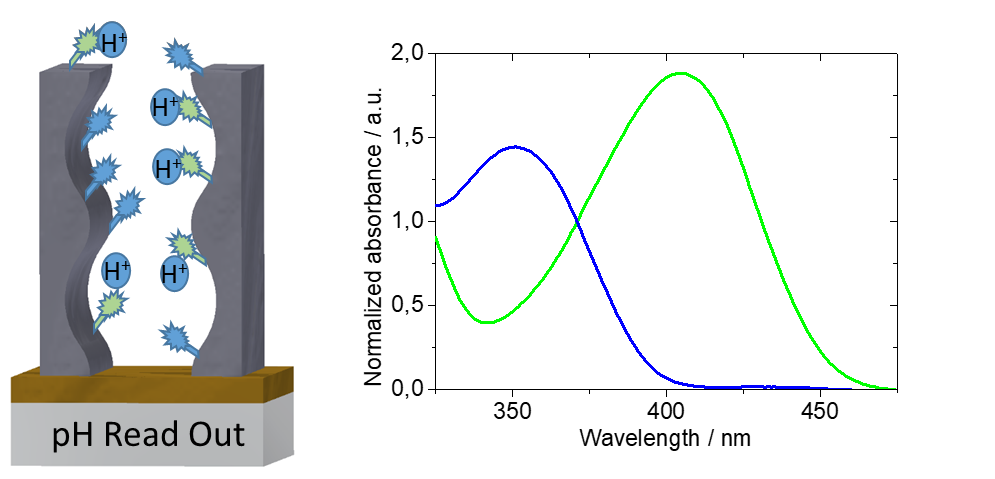LOEWE -iNAPO (finished)
In this context “pH” is an important parameter to control the charge within spatial confinement and thus to control pore accessibility. Thereby, spatial confinement influences “pH” in pores.
Here, we are interested in understanding the effect of spatial confinement on pore charge and “pH” in confined space by using pH-sensing dyes, fluorescence spectroscopy and in collaboration single molecule fluorescence.
R. Brilmayer, C. Förster, L. Zhao, A. Andrieu-Brunsen, Recent trends in nanopore polymer functionalization, Current Opinion in Biotech, 2020, 63, 200-209.
M. H. Tran, R. Brilmayer, L. Liu, H. L. Zhuang, C. Hess, A. Andrieu-Brunsen, C. S. Birkel, Synthesis of a smart hybrede MXene with switchable conductivity for temperature sensing, ACS Appl. Nano. Mater., 2020, 3, 5, 4069-4076.
R. Brilmayer, S. Kuebelbeck, A. Khalil, M. Brodrecht, U. Kunz, H.-J. Kleebe, G. Buntkowsky, G. Bayer, A. Andrieu-Brunsen, Influence of nanoconfinement on the pKa of polyelectrolyte functionalized silica mesopores, Adv. Mat. Interf., 2020, 1901914.
M. Stanzel, R. Brilmayer, M. Langhans, T. Meckel, A. Andrieu-Brunsen, FRET-based pH-sensing in mesoporous thin films with tunable detection range, Microporous and Mesoporous Materials, 2019, 282, 29-37.
Involved team members: R. Brilmayer
Funding: iNAPO



